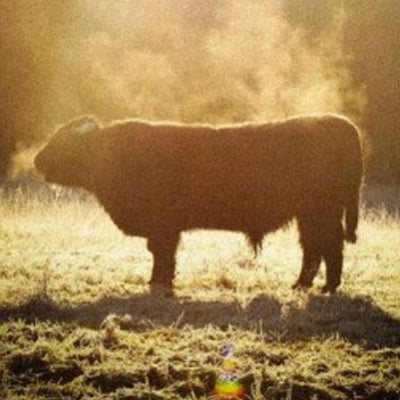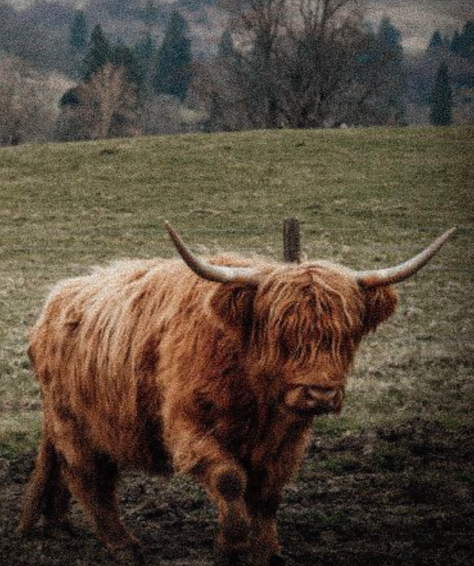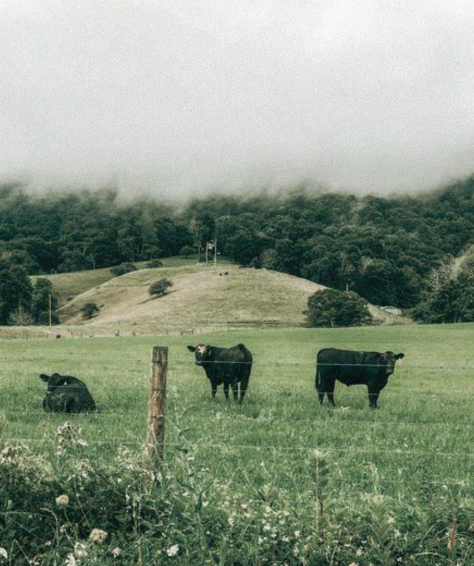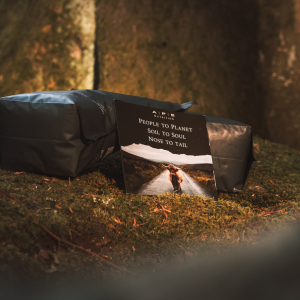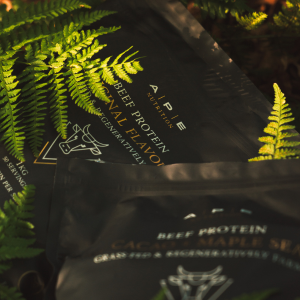Recently I’ve been hearing more and more people talk about how a meat tax is an inevitability. Before this extremely flawed concept gains too much momentum, I want to throw my hat into the ring and explain why, at its essence, this is a con. The bottom line is that the meat tax is really a C02 tax; It’s designed to make money, not only from meat eaters, but from any individual that ‘produces’ too much C02. Just like when BP popularised the terms ‘carbon footprint’ that eventually led to carbon credits, a tax on meat isn’t about doing what’s right for human health and the health of the planet, it’s about lining the pockets of the already wealthy.
Now let me breakdown why…
Firstly, it’s built on the idea that the C02 from cattle is causing climate change. There’s an argument to be made that the warming and cooling of the earth is a natural phenomenon that occurs in cycles and scientists have demonstrated this by mapping the earth’s temperature back thousands of years. However, I’m no expert on climate change and that’s a whole other blog in itself. Therefore, for the purpose of this, let’s agree that human beings are contributing to global warming through our production of C02.
The mainstream media paints the picture that cows are the number one cause of C02 and, therefore, meat eaters are to blame. The reality of the situation is that cattle are just a scapegoat for big corporations who are producing way more C02 and are looking to point the finger elsewhere. The figures here speak for themselves. A study conducted by the US Environmental Protection Agency (EPA) in 2016, analysed the total greenhouse gas emissions produced by sector. The results were:
- Transportation 28.5%
- Electricity generation 28.4%
- Industry 21.6%
- Commercial 6.4%
- Residential 5.1%
- Crops 4.7%
- Livestock 3.9% (of which beef only made up 2%)
On top of this, farms like White Oak Pastures in the US have demonstrated that when traditional farming practices are used, cattle actually sequester more carbon into the soil than they give off. The study carried out on their land showed that for every pound of beef they produced, 3.5 pounds of carbon was captured into the soil. This made their beef production carbon negative, demonstrating that when done right, ruminant animal agriculture actually reduces C02 in the atmosphere. Comparably ‘Beyond Burger’, the beef substitute creates 4 pounds of carbon per pound of product produced. In addition to adding to the planets C02 load, Beyond Meat burgers are also packed with highly processed vegetable oils (like rapeseed and canola oil) that are extremely damaging to the body.
It’s comical that as cattle are being demonised in the media, bison, that perform exactly the same role, are being reintroduced back into the UK to ‘help fight the effects of climate change’ by acting as ‘natural engineers’. Evan Bowen-Jones, Chief Executive at Kent Wildlife Trust, where the bison have been introduced, stated that “the bison will help to create climate resistant landscapes, which can adapt to the challenges presented by the crisis we face”. This is exactly what cattle do when raised in a regenerative manner.
The carbon given off by free range cattle and other ruminant animals has been part of our ecosystem forever. Although C02 is often demonised, when created naturally, it’s actually a critical component of a healthy ecosystem. It’s taken in by plants that then give off oxygen in return and is captured by soil, increasing its health. Whereas the carbon produced by big corporations is a relatively recent thing, which takes natural resources from the earth and releases additional C02 into the atmosphere.
As a side note, increasing soil health is an often overlooked but extremely important part of the conversation when it comes to human and animal health. As Sadguru wisely states below, healthy soil is a cornerstone of healthy life on this planet. For the vast majority of human history we appreciated how important soil is, making long and sometimes treacherous journeys in search of new land and better soil. Now the importance of soil health is completely disregarded by major food producers, so much so that Maria-Helena Semedo of the UN’s Food and Agriculture Organisation predicts that if we continue at this rate of degradation, the entire world’s topsoil will be depleted in sixty years. This will have dire consequences on our planet and the health of the animals and humans that populate it.
“Our body is essentially soil and water. The quality of our soil and water determines the quality of our food, our body and our life” - SADHGURU
The other side to this argument that’s not being looked at in the mainstream, is the nutritional one. Generally, our population is massively undernourished and the rapid rise we’re experiencing in chronic diseases would be offset, at least in part, if we gave our bodies adequate nutrition.
When Dr Weston A Price traveled the world studying traditional people living in tribal communities, it quickly became apparent that lots of the diseases that plague the majority of the world today were much less, if at all prevalent. This tallies with the reports of British explorers in the early twentieth century who claimed to encounter nomadic people in Afghanistan who had never heard of cancer and often lived beyond one hundred years old. These findings sit in stark contrast to the latest health statistics, showing that; 1 in 2 people will get cancer, 1 in 4 people have diabetes, 1 in 10 people have ADHD, 1 out of 3 males have infertile sperm and it’s predicted that chronic diseases will amount to $47 trillion in care costs by 2030.
It doesn’t take a genius to work out that the massive shift we’ve experienced in diet and lifestyle habits from the way we evolved to operate over thousands of years is the driving force behind this drastic shift in human health. The fact is that meat (especially organ meat) and dairy are extremely nutrient dense and have made up a large proportion of our diets throughout our time on this earth. A review of the diets of 229 hunter gatherer societies showed that on average they ate 68% animal foods and 32% plant foods.
Also before anyone comments saying that statistics show that we live longer now than we did in the past. Technically this is true, however this masks the reality of the situation. Advancements in technology have led to better sanitation, antibiotics and life support machines. This has resulted in way less infant deaths and people being kept alive later in life. That said, if we discount infant deaths and large groups being wiped out by disease in the past, as well as considering how many people are surviving on life support today, it’s my belief that ancestral people lived longer and much healthier lives generally.
For example, one of the first documentaries ever made called ‘Grass: A Nation’s Battle for Life’ in 1925 documents the Baktiari tribe in Iran. It follows them on one leg of an over 200 mile journey the tribe made twice a year in search of fresh pasture for their goats and pigs. It shows 5,000 people including old men, pregnant women and children herding their animals and carrying their belongings at high altitude in bare feet and sometimes through snow. The tribe covered the distance of twenty marathons a year like this. Ask yourself, would the 5,000 people in closest proximity to you right now be healthy and vital enough to head out and travel 200 plus miles in these sorts of conditions?
So how did they do it? By consuming a lot of nutritionally dense foods and not eating anything that was harmful to their health like vegetable oils, the industrial sludge that is hidden in most of the foods you’ll find in the supermarket today. When Dr Price analysed the diets of the primitive groups he encountered across 11 locations around the world, the food they ate had at least four times the recommended daily allowance (RDA) for all minerals. For example, the food that the indigenous people of the polar regions consumed had 5.4 times the calcium, 5 times the phosphorous, 1.5 times the iron, 7.9 times the magnesium, 1.5 times the copper, 8.8 times the iodine and at least 10 times all vitamins.
The same nutrients that enabled our ancestors to complete these amazing feats of physical exertion are massively lacking in the modern diet of today, leading to an onslaught in chronic disease. Food can bring immense vitality to your life, enabling you to optimise your brain and bodily functions in the moment and safeguard you against aging badly. Alternatively, it can act as a slow poison impeding your ability to maximise your potential right now and steadily build the level of inflammation in your system until one day you’re diagnosed with a chronic illness like cancer or heart disease.
As if the suggestion to cut out environmentally beneficial and nutrient dense meat couldn’t get any worse, the proposed solution is to consume processed plant based frankenfoods instead. Even healthy plant based diets lack in key nutrients like retinol (the bioavailable form of vitamin A) and B12 (which we require for energy), never mind processed plant-based food, which are basically nutritionally void. Not only this, but these foods rely on mono-crop agriculture that destroys soil health and wildlife biodiversity through the heavy use of chemical inputs.
The bottom line is that a meat tax makes no sense and it’s so obvious this is being driven by corporations influencing governmental policy to increase their profit margin and not by a concern for human health or the health of the planet. To counteract this, we need to vote with our money. Support your local farmers who are doing things the right way; growing fruit and vegetables without the use of synthetic pesticides, herbicides and fungicides and raising animals in a truly free range manner allowing them to eat their natural diets.
I hope you’ve found this article beneficial and please let me know if you have any questions in the comments below.
Thanks, Josh
Also, if you want to read more about the Nose-To-Tail diet that we believe is optimal for human health you can do so here. Or if you’re interested in learning more about why we encourage the support of truly organic and regenerative farms, we’ve written our thoughts on that here.
Sources
https://www.epa.gov/ghgemissions/sources-greenhouse-gas-emissions
https://blog.whiteoakpastures.com/blog/carbon-negative-grassfed-beef
https://www.wildlifetrusts.org/news/bison-released-tackle-climate-change
https://www.theguardian.com/us-news/2019/may/30/topsoil-farming-agriculture-food-toxic-america
